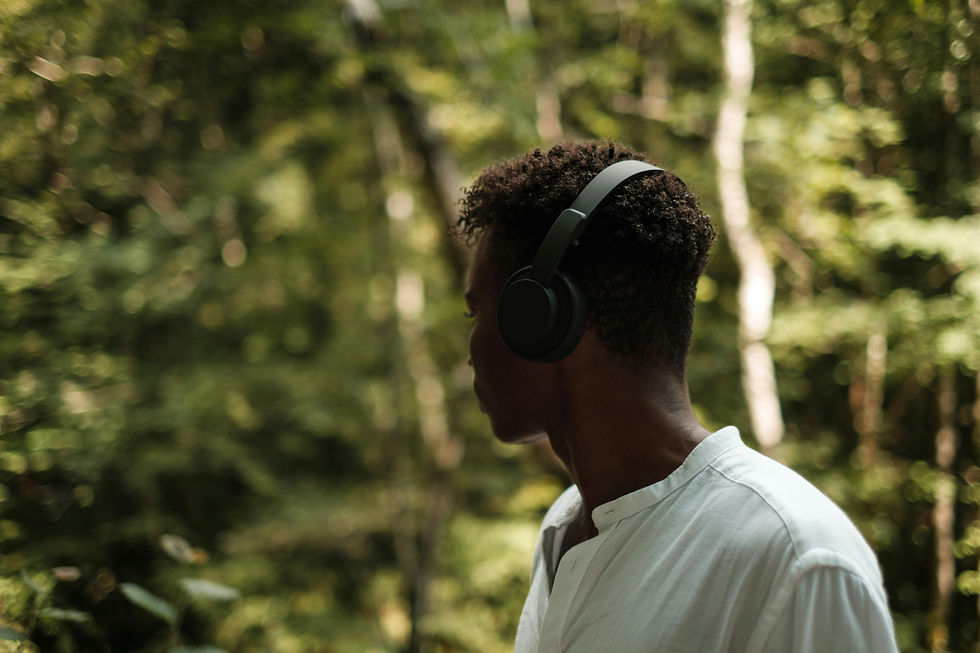Sacredness of Sound System Culture with Kibir La Amlak
- Tyler Scott
- Sep 14, 2023
- 4 min read
In the vibrant tapestry of Jamaican culture, one element stands out like a beacon of unity, celebration, and tradition: the Sound System. Rooted in the heart of Jamaica's history, sound system culture is not just about music; it's a spiritual and communal experience that has transcended generations, genres, and borders. These gatherings, like a sacred ritual, weave together music, community, and a unique sense of spiritual connection that transcends time.
In a recent episode of Project Immersed, Tyler Cymone and Jamie Thomas aka Kibir La Amlak opened a dialogue delving into the history and a deeper understanding of these spaces. Kibir La Amlak is a live dub show, record label, studio and sound system based in London, UK, founded by Jamie “JT” Thomas in 2008. Jamie is a living expression of the sacredness of these spaces, and in this special one-on-one interview, he takes us on a journey into deeper understanding of the roots and foundation of sound system culture.
Huddersfield Carnival, August 1987 // Photo by Tim Smith, courtesy of Bradford Museums & Galleries
History
The roots of Jamaican sound system culture can be traced back to the early 20th century when the island was under British colonial rule. Social gatherings, dances, and celebrations were essential for maintaining a sense of identity and resistance, and thus, sound systems and sound system gatherings emerged as a means of bringing people together through music.
It wasn't just about the music; it was about the energy, the vibration, and the connections made on the dancefloor. As the years rolled on, sound systems evolved. The equipment became more sophisticated, and the culture spread far beyond Jamaica's shores, influencing the global music landscape.
In this dialogue, Jamie Thomas took us on a journey through this history, taking us back as far as the enslaved African people who brought the drum as well as a wisdom of sacred drum patterns to the island of Jamaica. This understanding of the sacredness of the instrument allowed them to create music that was deeply influential to both the musicians and the listeners. He specifically speaks on Niyabinghi drumming, as these rhythms are the foundational basis of Reggae music. These rhythms are sacred in that it is a form ritual drumming performed as a communal meditative practice amongst the disciples of Rastafari in Jamaica. The rhythms can influence both the musician and listener and have a healing effect. In a recent article, we covered the healing influence of drumming. Take a listen to a Nyabinghi drum session below.
Ceremonial + Ritualistic Components of Sound System Gatherings
Sound system culture goes beyond mere entertainment; it holds a spiritual significance for the Rastafari people. The vibrations of the bass, the lyrics of the songs, and the unity of the crowd create an atmosphere that feels transcendent. It's a space where people can release their inhibitions and connect with something greater than themselves. Some people even found themselves entering into altered states or a meditative trance. The video below depicts the deeply ceremonial and spiritual essence of these gatherings.
Dub music, specifically, exemplifies this spiritual dimension. Dub is characterized by its heavy use of effects, reverb, and echo, creating an immersive sonic experience that transports listeners to another realm. Dub's echoing soundscapes often feature fragments of vocal samples that can seem like incantations or mantras, enhancing the spiritual undertones of the music.
Jamie also shines a light on the intentionality of the physical space at these gatherings. Details like dimmed lighting, specific speaker positioning, incense burning, and more are all used as subtle cues to guide people deeper into themselves for a spiritual journey. He describes the essence of these spaces in the clip below.
Power of Vibration
Heavy bass frequencies are a hallmark of sound system music. Basslines are often central to reggae, dub, dancehall, and other Jamaican genres. The vibrations from the bass serve not only to entertain but also to connect people on a physical level. It's a communal experience where the music brings people together through shared vibrations.
Jamie is an avid SUBPAC user and shares that his reason for being so is due to his overstanding of the power of vibration. In the Project Immersed chat, Jamie and Tyler delve into a dialogue about vibration; demystifying the negative connotation around "low" frequencies, characterizing the influence of vibration on human beings, and more. Check it out in the clip below.
Conclusion:
In conclusion, the power of vibration in Jamaican sound system culture extends far beyond the physical sensation of sound. It's a cultural, social, and even spiritual phenomenon that has deeply impacted both Jamaican culture and global music. The vibrations are a tangible manifestation of the cultural and emotional connections that sound system culture fosters among its participants and listeners.
Kibir La Amlak is a vessel that is working to keep the sacred roots of these sounds and spaces alive and well. To see his full dialogue with Project Immersed, please check out the video below.
Links:
Did you enjoy the dialogue? Let us know @healthandbass :)
.png)






Comments